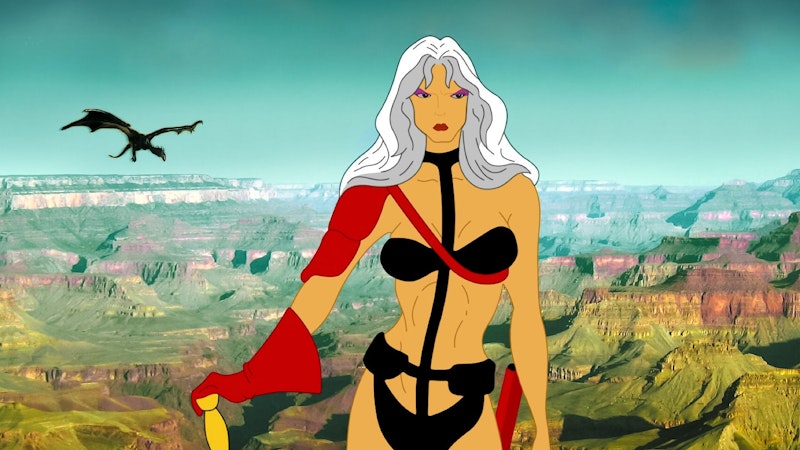Seven: David Fincher’s second film, and his breakthrough, still chills 30 years after its release. Quentin Tarantino, now a proper partner of Fincher’s on the upcoming Once Upon a Time in Hollywood sequel The Continuing Adventures of Cliff Booth, has said it was his one-two punch of ultraviolence in Reservoir Dogs and Pulp Fiction that set the stage for movies like Seven to succeed, let alone be produced and released in the first place. He’s not wrong or even self-aggrandizing: can you imagine a thriller this brutal coming out in the early-1990s? Forget the 1980s—Seven makes Steven Seagal look like Pillow Talk. It’s unreal how bad mainstream American cinema was in the early-1990s, and how quickly it shifted in the middle of the decade. I don’t think Seven touches Fincher’s Fight Club, but it’s an undeniable thriller, one of the creepiest cop movies of its time and since its release.
Brad Pitt screaming “WHAT’S IN THE BOX?!??!?!?!?!” is the enduring meme of the movie, a twist-ending spoiler known by all on the level of The Sixth Sense or The Crying Love. But what’s not universally remembered or constantly memed is the surprise appearance of Kevin Spacey as the killer John Doe. He nails it, because he’s a great actor, one of the best of his generation. Watching Seven in 2025, in Baltimore, I couldn’t help but wonder if Spacey was in the audience, luxuriating in some of his best work. I didn’t stick around in the lobby to find out. Maybe someone else got surprised.
Mildred Pierce: A key film in many ways: for noir, for star Joan Crawford, director Michael Curtiz, even Ann Blyth, who’d go on five years later to her signature role (the title role) in All About Eve. But in 1945, Curtiz and co. were simply cranking out another picture for Warner Brothers, and if any of them thought that Mildred Pierce would be remembered or mentioned in the same breath as the recently feted Casablanca (Curtiz won his only Oscar for the film in early 1944), they kept it to themselves. As a “woman’s picture,” or a “woman’s problem picture,” there isn’t a better example, except maybe another one of Crawford and Curtiz’s collaborations, 1947’s Flamingo Road. Jack Carson and Zachary Scott bookend the film, clueless men convinced they have Crawford and her nasty daughter under their control; only one of them makes it out alive.
There’s nothing dusty about Mildred Pierce, an 80-year-old movie: Crawford’s title character is a working-class woman, an entrepreneur, a mother, a lover, and mixed up in all sorts of familiar and real bullshit. Anyone with a passing interest in film should be required to see Mildred Pierce to understand that the “woman’s picture” was hardly a leaden format like the “message movie;” other than the work of Douglas Sirk, these kinds of movies still aren’t appreciated for what they are, a genre that would never again reappear regularly in Hollywood cinema. Maybe that’s because Crawford and Bette Davis stood alone as “broads” who could take on the world while remaining endlessly sexy. Katharine Hepburn and Elizabeth Taylor had teeth, but they were never as programmatic as Crawford and Davis, the two stars who most often played characters who just wanted to fit in. In their “problem pictures,” it’s clear that conformity has a price, one often too heavy to bear.
Heavy Metal: A great example where the poster is more famous than the movie (alongside Army of Darkness). I saw the poster for this movie everywhere growing up in Manhattan: it was a staple of all comic book and video stores. Some of this must’ve been promotion for Heavy Metal 2000, released in the same year, but before last Thursday, I hadn’t seen the 1981 original and Heavy Metal 2000 remains a mystery. But, per Lee Gardner’s programming notes for the Charles Revival Series, Heavy Metal soars out of every 13-year-old boy’s dream. Scuzzy cities, scuzzier people, cyberpunk dysfunction, implied dystopia, and an abundance of T&A (leaning heavily on the T). Gerald Potterton directed Heavy Metal, but it’s an anthology film drawn from artists involved in the magazine of the same name: Richard Corben, Angus McKie, Dan O’Bannon, Thomas Warkentin, and Bernie Wrightson. At 86 minutes, it’s just a touch shaggy, but the final segment features a bird ripped straight out of Ralph Bakshi’s Wizards.
I felt a connection to this bird, who’s brutalized and hurt, along with its master. But they survive, flying off into the sunset (moonset?). This bird saved a movie that was losing me, and this bird will be the character I take with me. I used to know Heavy Metal by its poster… and now I know its bird. Forget about the T&A, however lovingly animated—I love that fucking bird so much it’s unreal.
—Follow Nicky Otis Smith on Twitter: @MonicaQuibbits

